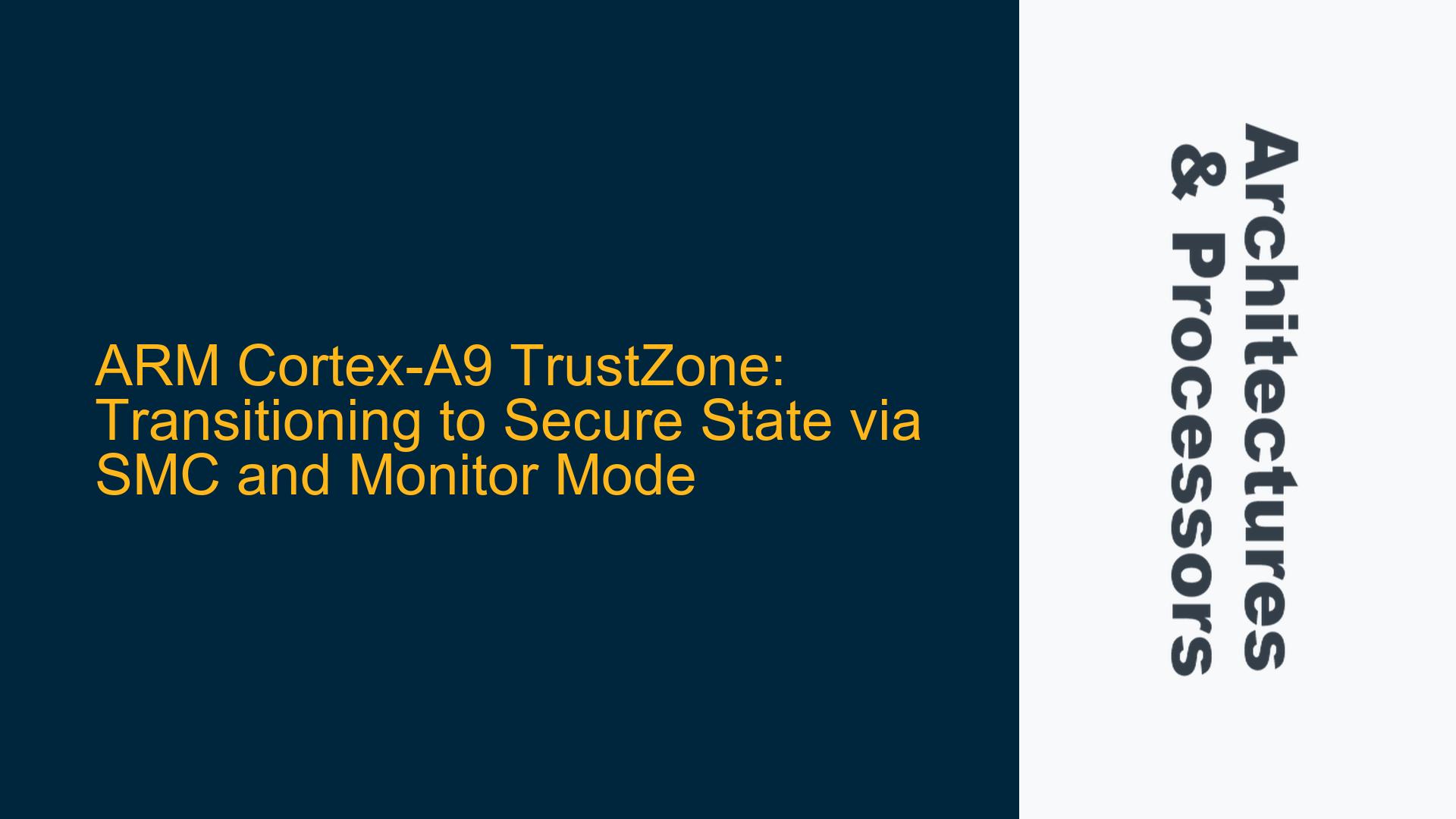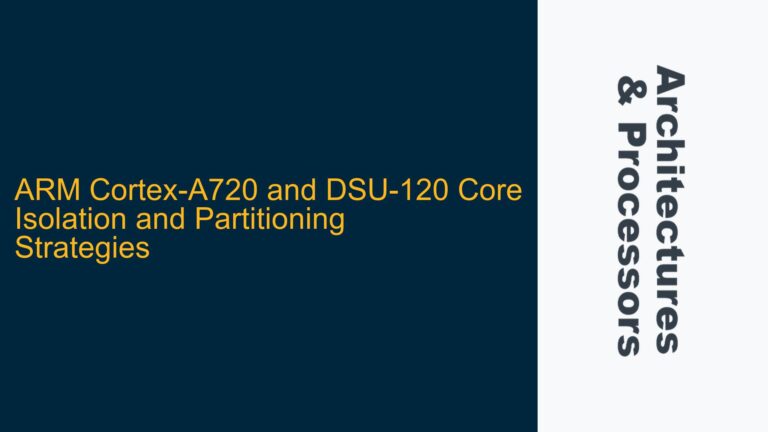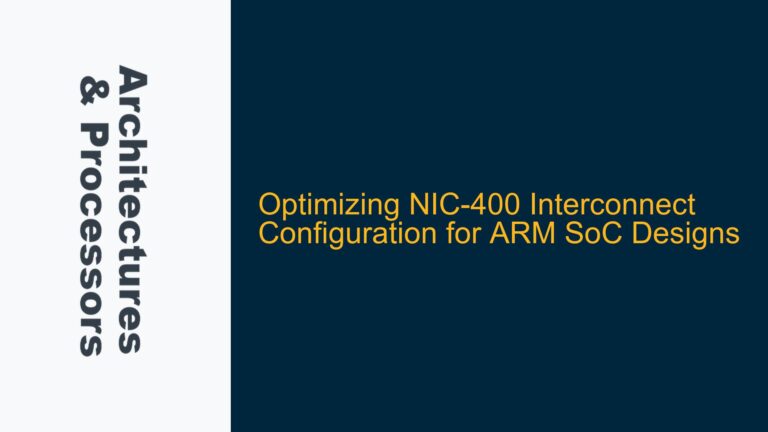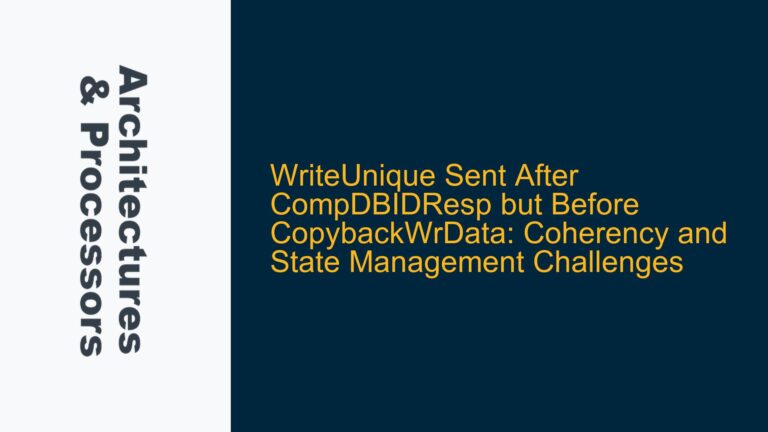Understanding the Need for Secure Monitor Call (SMC) and Monitor Mode in ARM Cortex-A9 with TrustZone
The ARM Cortex-A9 processor, particularly when equipped with TrustZone technology, introduces a robust security model that partitions the system into secure and non-secure states. This partitioning is crucial for isolating sensitive operations and data from non-secure applications. However, transitioning between these states is not trivial and requires a deep understanding of the ARM architecture, particularly the Secure Monitor Call (SMC) instruction and Monitor Mode.
The primary issue at hand is the need to modify the Non-Secure Access Control Register (NSACR). Specifically, the TL bit within NSACR, which controls access to certain TrustZone features, can only be modified while the processor is in the secure state. This necessitates a transition from the non-secure state to the secure state, which is achieved through the use of the SMC instruction and entering Monitor Mode.
The complexity arises from the fact that the ARM reference manuals, while comprehensive, can be challenging to interpret, especially for those new to TrustZone or ARM’s security extensions. The lack of readily available sample code or detailed examples further exacerbates the difficulty in implementing this transition.
Key Challenges in Implementing SMC and Monitor Mode for Secure State Transition
The implementation of SMC and Monitor Mode for transitioning to the secure state involves several intricate steps and considerations. One of the primary challenges is ensuring that the Monitor Mode is correctly configured and that the SMC instruction is properly invoked. This requires a thorough understanding of the ARM architecture, particularly the roles of the Secure Monitor and the Non-Secure world.
In a typical ARM Cortex-A9 system with TrustZone, the Secure Monitor acts as a gatekeeper between the secure and non-secure states. When an SMC instruction is executed, the processor transitions to Monitor Mode, where the Secure Monitor can then facilitate the transition to the secure state. However, this process is not automatic and requires careful setup, including the configuration of the Monitor Mode vector table and the handling of the SMC exception.
Another challenge is the potential for subtle timing issues and race conditions, particularly in systems where both secure and non-secure worlds are actively executing code. Ensuring that the transition to the secure state is atomic and that the NSACR.TL bit is modified without interference from non-secure code is critical. This often involves the use of memory barriers and careful sequencing of instructions to prevent reordering that could lead to security vulnerabilities.
Detailed Steps for Implementing SMC and Monitor Mode to Modify NSACR.TL
To successfully implement the transition to the secure state using SMC and Monitor Mode, the following detailed steps should be followed:
-
Initialization of Monitor Mode: Before any SMC instructions can be executed, the Monitor Mode must be properly initialized. This involves setting up the Monitor Mode vector table, which contains the exception handlers for SMC and other related exceptions. The vector table should be placed in a secure memory region to prevent tampering from the non-secure world.
-
Configuration of the Secure Monitor: The Secure Monitor is responsible for handling the transition between the secure and non-secure states. This involves setting up the necessary data structures and ensuring that the Secure Monitor has access to the required resources. The Secure Monitor should also be configured to handle the SMC exception and to perform the necessary actions to transition to the secure state.
-
Execution of the SMC Instruction: Once the Monitor Mode and Secure Monitor are properly configured, the SMC instruction can be executed from the non-secure world. This will trigger an exception, causing the processor to transition to Monitor Mode. The Secure Monitor will then handle the exception and facilitate the transition to the secure state.
-
Modification of NSACR.TL: After transitioning to the secure state, the NSACR.TL bit can be modified as required. This involves writing to the NSACR register using the appropriate assembly instructions. Care must be taken to ensure that this operation is atomic and that no non-secure code can interfere with the modification.
-
Return to Non-Secure State: Once the NSACR.TL bit has been modified, the processor must return to the non-secure state. This involves executing an SMC instruction from the secure state, which will trigger another exception and cause the processor to transition back to Monitor Mode. The Secure Monitor will then handle the exception and facilitate the return to the non-secure state.
-
Verification and Testing: After implementing the above steps, it is crucial to verify that the transition to the secure state and the modification of NSACR.TL are functioning correctly. This involves testing the system under various conditions to ensure that the secure state is properly isolated and that the NSACR.TL bit is only modifiable from the secure state.
By following these detailed steps, developers can successfully implement the transition to the secure state using SMC and Monitor Mode on an ARM Cortex-A9 processor with TrustZone. This ensures that sensitive operations and data are properly isolated and protected from non-secure applications, enhancing the overall security of the system.
Conclusion
The transition to the secure state using SMC and Monitor Mode on an ARM Cortex-A9 processor with TrustZone is a complex but essential task for ensuring the security of sensitive operations and data. By understanding the key challenges and following the detailed steps outlined above, developers can successfully implement this transition and modify the NSACR.TL bit as required. This not only enhances the security of the system but also ensures compliance with ARM’s security architecture, providing a robust foundation for secure embedded systems.






